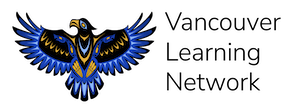Introductory Japanese 11
Japanese Introductory 11 Course Overview
Big Ideas
Listening and viewing with intent supports our acquisition and understanding of | Stories help us acquire language | Expressing ourselves in | Exploring diverse forms of cultural expression allows us to experience and appreciate cultural diversity. |
| Acquiring a new language provides a unique opportunity to access and interact with diverse communities. |
From: https://curriculum.gov.bc.ca/curriculum/languages/11/japanese-introductory
Introduction
This course offers a comprehensive foundation to the study of Japanese. Students will learn two of the phonetic systems and begin the study of the ‘Chinese’ characters. Reading, writing, listening, and speaking in Japanese are emphasised in each lesson, and students have an opportunity to demonstrate their understanding of the culture of Japan and their own facility of the language.
Cultural information is presented in each Module.
Where does this course fit?
- Prerequisites: None
- Graduation Status: Elective for graduation
- Japanese 11 and Japanese 12 can be taken sequentially (and are offered through VLN) upon successful completion of the previous course.
Course Materials
- Students will need to have access to a computer and develop some computer skills.
- They may also borrow a text from the VLN library, if desired.
Brief Outline
Unit | Description |
Module 1 | Greetings; X is Y; Question sentences; Possessives; |
Module 2 | This, that, that over there, which?; Here, there, over there, where?; Whose?; Also; It is not the case; Asking for agreement; Emphatic speech |
Module 3 | Verb conjugation; Verb types and the present tense; Particles; Time Reference; Invitations; Word Order; Frequency adverbs; The Topic Particle ‘wa’ |
Module 4 | Animate and inanimate existance; Describing where things are; Past tense of ‘desu’; Past tense of Verbs; More ‘also’; Time; ‘Many’, ‘And’ |
Module 5 | Adjectives; Things we like/dislike; ‘Let’s do/Shall we do’; Counting |
Module 6 | ‘Te’ form with ‘please’, ‘is it alright if. . .’ and ‘you must not. . . ’; Describing two activities; ‘From’ and more of ‘Shall we. . .’ |
Module 7 | Present continuous; Describing people; ‘te’ forms for joining sentences; Verb stem plus ‘ni iku’; Counting people |
Assessment Percentage Breakdown
Assessment Type | Percentage of the Course |
Assignments (8) | 35% |
Quizzes (3) | 9% |
Discussions | 4% |
Oral Exams (2) | 8% |
Midterm exam | 15% |
Final exam | 20% |
Cultural Projects (3) | 9% |
You have up to a year to complete your course.

